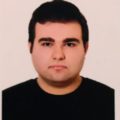Droplet and Catalyst Interactions in Atomization of Bio-Oils
Joint Doctorate
1st supervisor and 1st promotor: Prof. Hans Kuipers (TU/e)
2nd promotor: Prof. Detlef Lohse (UT)
2nd supervisor and co-promotor: Assistant Prof. Maike Baltussen (TU/e)
Affiliation: Eindhoven University of Technology and University of Twente
Research theme: Smart Biomass Conversion
New generations of transportation fuels and chemicals involve a partial or complete replacement of fossil resources by renewable ones in response to the depletion of carbon fossil resources and as an effort to mitigate CO2 emissions. Lignocellullosic biomass serves as a preferred feedstock for the generation of transportation fuels and chemical building blocks. After pyrolysis, the resulting biomass-derived oil could be further processed using existing refining catalysts, processes and infrastructure. This route offers the advantage that existing technologies can be utilized requiring relatively little additional capital investments.
However, refining of biomass-derived oils present important challenges that need to be addressed. Bio-oils are multicomponent mixtures consisting of various mostly oxygenated hydrocarbons, water and chars. This makes the energy content of bio-oils mostly lower than conventional transportation oils. In addition, this high oxygen content causes a high acidity or low pH inducing enhanced corrosive behavior and deactivation of the catalyst. In order to deoxygenate the bio-oils, the oil has to interact with acidic zeolite catalysts.
Spray atomization is used for rapid evaporation of the bio-oils to allow for fast interaction with acidic zeolite catalysts. The spray formation and hence evaporation efficiency and catalytic conversion is largely affected by the droplet-droplet and droplet-catalyst interactions. In this sub-project a combined experimental and numerical approach will be incorporated to elucidate the effects of droplet-droplet and droplet-catalyst interactions on spray formation and performance.
Keywords:
- Biomass conversion
- Spray Atomization
- Droplet Catalyst Particle Interaction
- Regime Maps
- Direct Numerical Simulation (DNS)













